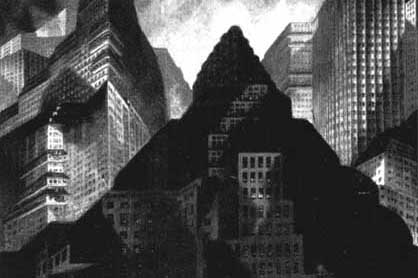|
|
||||||
| image | activities | contacts | links | italiano | ||||||
|
5th
International Festival for Architecture in Video |
||||||
|
introduction program - dates - authors - works - exhibitions partners credits previous editions mailto |
 Giuseppe Botta, Riccardo Caruso Berlin, year 00 Italy 2000, 14’13” A scar is a permanent sign. A wound that time does not heal, that time cannot heal. An irreparable gap, that used to be a wall and is now a sign on the asphalt. The ghost of that wall continues to divide Berlin’s face into two parts. It is difficult to forget the pain, the past and the future pursue each other along the roads and through the buildings; they coexist. The past and the future: Berlin’s double, schizophrenic personality. That is why, today, it is possible to see two cities in one, East Berlin and West Berlin. It seems as if, going through two time zones and going through an ancient and modern city, one can actually plunge into the oppressive atmosphere of Germany year zero, of Metropolis. East Berlin is a surviving city that smells of death. “Le ciel bas et lourd pèse comme un couvercle” and holes of tragic memory and inhuman decay of the war flow from the red bricks of the crumbling buildings. However, beyond that invisible wall and beyond history, where the large glass cathedral stands, West Berlin, desperation seems to be a faraway and out of fashion memory. “Berlin year 00”, almost an American dream. The gap has been bridged. Not even the buildings have any similarities left with the ancient Germanic tradition and the materials used for the buildings are different and new. They have nothing to do with the city that does not remember. Berlin imposes itself as an inhuman city, post human, a metropolitan nightmare swarming with buildings, skyscrapers and constructions that look like hideous shopping centres. In such a strong futuristic scenario it is quite impossible to find traces of the gothic imprint that was evident even in “Wings of Desire”. The symbol of Berlin’s new architecture is Potsdamer Platz, an urban void that has now become a real stylistic laboratory. If what Vidal de Blanche states is true, that is that man bears the memory of the moor, woods and the uncultivated areas as an inseparable ensemble, then what can we recall of the architectural coldness of Berlin’s new buildings? The new tries to overpower the old and geometrical demons of glass gleam as if to fill the void with transparency; mirror of this new desperate serenity. There is, however, a boundary. That invisible wall beyond which nothing can be removed, beyond which the indelible memory is urging. Giuseppe Botta was born in Catania on 5th February 1970 and is graduating in Architecture at the University in Reggio Calabria. He has always loved photography and this year he organised his first exhibition entitled “Passaggi” at the Web Caffè in Catania. In April he was admitted to a stage on cinematography, television and theatre organised by the film studio Midal together with the provincial administration of Catania. At the moment he is doing a course at City lab on “Digital Video and Editing. Riccardo Caruso was born on 15th december 1976 and is studying Modern Literature at the University of Catania. He is a Honoris Causa member of the “Eliodoro” Academy of Art-Literature-Science. He loves literature and cinema and he did a stage of cinematography organised by Adriano Chiaramida, during which he directed “Libertà-omaggio agli ostracizzati Ciprì e Maresco”. He has written a book of poetry, “Natura morta – amore”, published by Bonano di Acireale –Roma Publishers that will soon be available. He has received a number of prestigious prizes for his literary work which was published in the anthology entitled “Voci” (Catania, Eliodoro, 1999). |
VIDEO | ||||